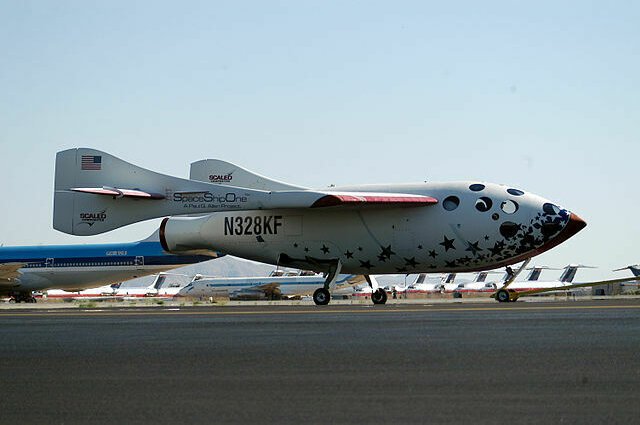Chronicling NewSpace Part 3: Private Space Flights
- Published
- Reading Time
- 2 minutes
- Contents
In the previous two posts, we talked about the story of SpaceX and also how US government catalayzed creation of a generation of startups that built a whole new American dream in space. While a lot was happening in the background for research and at ISS, Ansari XPrize can be singled out for bringing space into imagination of most people across the world with its promise of starting ‘space tourism’.
Back in 1995, Peter Diamandis started XPRIZE foundation to use private money to spur path-breaking innovation that solves key human challenges. Their first challenge was to take humans to space in a re-usable vehicle. Only space shuttles had done this till then. Around early 2000s a few entrepreneurs became interested in attempting to win the prize. ‘XPRIZE’ became ‘Ansari XPRIZE’ after entrepreneur Anouseh Ansari and her husband decided to sponsor this in early 2004.
Being Burt Rutan
Burt Rutan, founder of Scaled Composites, was then a relatively unknown aerospace enthusiast who was making and perfecting his signature three-fuselage aircraft which had immense potential for being superbly fuel efficient. His claim to fame was Voyager which became the first plane to fly around the world without stopping or refueling in 1986.
Burt raised money from Microsoft co-founder Paul Allen to build SpaceShipOne to compete in the Ansari X-Prize competition. They built a unique design that had never been tried before. Between twin fuselage mothership (called White Knight) was a fast-burning hybrid motor based detachable module (SpaceShipOne). This could carry 3 humans, detach from the launch vehicle, fire for upto 90 seconds, touch space (defined as crossing Karman Line) and land on its own almost unpowered. This design was inherently hard to pull off but they eventually did. This first-of-its-kind three fuselage design had a trademark shuttlecock wing design (unique feathering atmospheric reentry system that creates high drag while maintaining stability) and a two steps hybrid engine using a combination of solid and liquid propulsion. This video explains it succinctly:
This technology was then commercialized in a joint venture between Burt and Richard Branson in an effort named The Space Ship Company (TSC) in 2005. Virgin Group owned 70% while Scaled Composites owned 30%. The main reason behind the formation of TSC was to own and use the technology created by Burt Rutan for Virgin SpaceShip programme. Consequently, Virgin Galactic unveiled its launch plan in 2008 to power space tourism. Eventually, Virgin acquired full ownership of TSC in 2012. In the period till 2009, 7 space tourists took 8 flights, all on a Russian spacecraft. Thereafter, the ISS program took priority and Russians stopped carrying tourists.
Commercial Space Flights
While Ansari XPrize brought forth cutting edge innovations in craft design, SpaceX was trying very hard to perfect its own rockets. Even though they picked up a lot of blueprints from NASA, the start was predictably rocky. The first successful flight of Falcon 1 came in the 4th attempt in September 2008. Musk later blamed himself for the last 3 failed flights.
Soon after, NASA announced the awarding of contracts to both SpaceX and Orbital Sciences Corporation in a press conference. The program brought in the future revenues worth $1.9 billion for SpaceX. Initially, NASA signed agreements with SpaceX and Rocketplane Kistler (RpK) in 2006, but later terminated the agreement with RpK due to insufficient private funding. This contract gave Musk the much needed revenue to continue pursuing his mission for powering interplanetary life.
Bold Constellations
In the following part of this series, we will cover the emergence of a new class of companies risking billions of dollars in beaming internet and telephony from the space. The promise of having always-on connectivity in all corners of the world was almost irresistible to entrepreneurs of this era. But very few actually succeeded.




